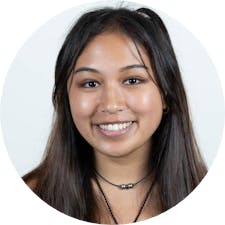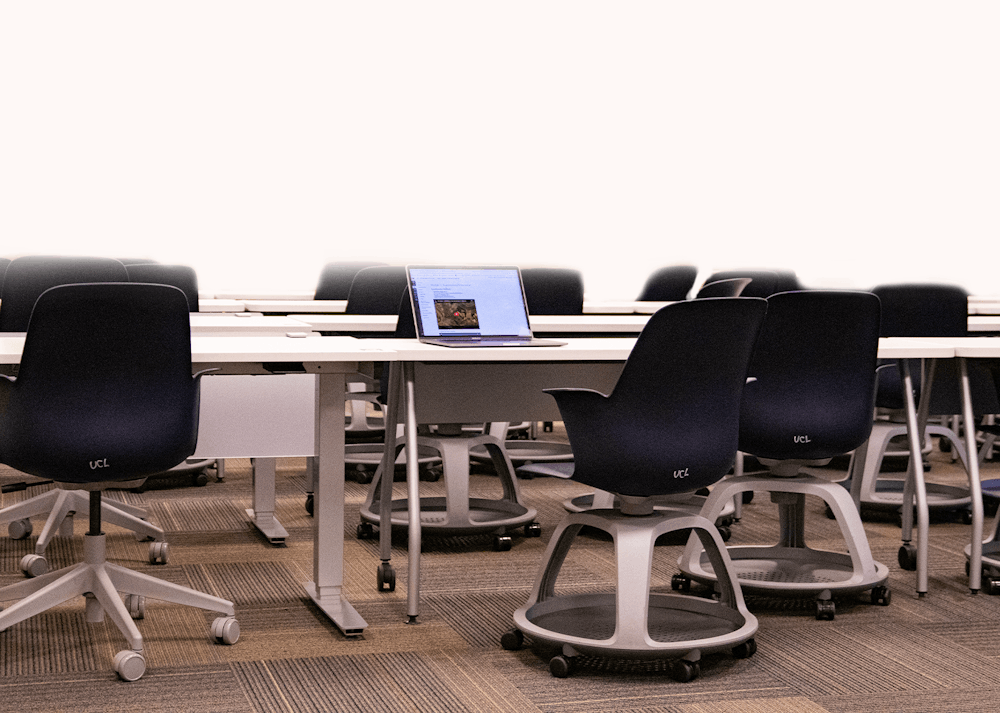As stewards of a university renowned for its ever-expanding online enrollment numbers, ASU’s administrators pride themselves on their — and by extension, the University’s — role in building what they view as the future of higher education in the digital age: a mix of online and in-person learning.
At ASU, technological access is a necessity for successful educational outcomes. In 2020, the University offered over 2,400 iCourses — completely online classes available to in-person students. The University has used Canvas as its learning management system since 2018. The same year, Zoom was licensed University-wide. One year later, Slack was also made available for the entire University.
Together, these three digital platforms allow students to take exams, attend classes and communicate with their professors and peers. But for those who lack reliable access to these integral learning platforms and online course offerings, accessing their coursework can seem like traversing an unbridgeable chasm.
As the University continues to pursue dramatic technological expansion, students who aren’t able to reliably utilize the University’s digital offerings believe it’s only broadening the persistent, yet often overlooked, campus digital divide.
“What does the internet mean?” asked Karen Mossberger, the director of ASU’s Center on Technology, Data and Society, which conducts research on digital inequality. “It’s access to information, just like education should be.”
An obscured divide
The term “digital divide” was coined by psychologist Lloyd Morrisett to describe the emerging and rapidly broadening gap in technological access during the sharp rise in computer ownership among the highly educated during the 1990s.
While the digital divide can be observed anywhere technology can, or can’t, be found, relatively little attention has been paid to the digital divide on college campuses, according to U.S. News and World Report. Within this oft-overlooked digital divide, students with disabilities, low-income students and Black, Hispanic, small-town, rural and first-generation students are among the most affected by the gap in access.
“Often, low-income communities become invisible in the larger society,” Mossberger said.
These students tend to struggle more with acquiring the technology necessary for successful online learning, such as laptops and reliable internet, or they experience other issues related to digital access. This in turn results in these college students earning poorer grades and getting lower GPAs, according to a 2018 study.
“Students who are connected do better,” Mossberger said. “They have resources. So this digital divide perpetuates the inequalities that are already there. It magnifies them.”
READ MORE: Connection ends here
Andie Jia knows that before heading out to class for the day, it’s routine for many college students to check their bags for a few necessities: perhaps a water bottle, a phone charger and, most importantly, a laptop. But for a long time, the junior studying secondary education couldn’t afford to shell out over $1,000 for a MacBook Pro in addition to the costs of other college expenses. So for roughly three years, he skipped that step of the routine, leaving for class with the laptop sleeve in his bag sitting completely empty.
“Having a laptop is very necessary for college students,” Jia said. “It’s very necessary that they have all the technology.”
As a university committed to maintaining educational accessibility, ASU says it is “tackling the digital divide” through its laptop loan program, which allows students to rent laptops to complete their course work.
But the program has stopped loaning out devices for the spring 2023 semester because it has reached maximum capacity.
Annie Davis, director of communications at ASU Enterprise Technology, said 2,904 laptop devices are currently on loan to students, but that many of students’ computing needs can be fulfilled by visiting on-campus computing sites and libraries.
Outside of class, Jia would cope with his lack of laptop access by frequenting places on campus — like Hayden Library, Noble Library and the Tech Studio in the Creativity Commons building — where he could access a computer with reliable Wi-Fi. But during class, he would have to resort to using his cell phone to complete online class activities, even as he watched his peers scroll on their laptop screens, able to use advanced course software and complete assignments with ease.
READ MORE: Opinion: The policy of digital division
Among professors with strict no-cell-phone policies, Jia found that his special circumstances typically warranted no sympathy. One professor explicitly warned him that their strict classroom ban on cell phones would hold, even if Jia wouldn’t be able to participate in class activities in any other way. If Jia violated the rule, his class grade would suffer.
Jia never ended up renting a laptop from the University’s laptop loan program. The program did not immediately respond to requests for comment on why it has reached maximum capacity and what it is doing to address high demand.
“If ASU can’t guarantee that every student enrolled has a laptop, then it’s always going to be a problem,” Jia said.
Bridging the gap
Susannah Sandrin, a clinical associate professor in the School of Mathematical and Natural Sciences, teaches environmental science classes online.
When she’s holding class through a screen, Sandrin is able to teach ASU students on all campuses and even halfway across the world. However, her class requires students to have a personal computer in order to access and complete lab assignments through the subscription learning platform SimBio.
“That particular company, I ask them every year if there are any other options that could make this accessible,” Sandrin said. “Every year we revisit it. We try to figure out if there is something else that’s the same quality that would be more accessible, and until we find that, we’ll stay with it.”
Despite their efforts, her department has not been able to find a software that offers better environmental science labs. “It’s really hard because you want to balance the quality of education with accessibility,” she said.
Because of the tech requirement, Sandrin has had to direct students to computer labs, libraries and other spaces with access to computers to complete their labs.
“We’ve worked with the library system since we started offering this course and started using that software program, so students can go to the ASU libraries and download it to any computer,” she said. “It’s just that they have to leave their dorms.”
Aside from the physical gear necessary for students’ success, Sandrin said online education is only as good as students’ internet access and quality. She gets emails every day from students who live in rural areas about needing a quiz reset because they lost internet connection while taking it.
In assistant professor Stacey Moran’s classes, heavy technology and extensive programs are not a problem with her “low tech, no tech” policy. Contrary to the typical classroom setting, no laptops or phones are seen out unless a student has learning accommodations.
Her class is a film and media studies course on science fiction called Film and Technoscience. It involves thinking about technology and how it affects people — which is ironic, she says, considering her classroom policy.
“I don’t think we yet have the tools to think critically about what (technology) really is, so by getting rid of it, taking it out of the classroom, I think it gives us an opportunity to think about it in a different way,” she said.
Although she has assignments on Canvas, she provides paper handouts and encourages students to write, in class and at home. And even on Canvas, she aims to make her class a more accessible place.
“I’m still working in my classes to make readings accessible — those PDF readers where people who have visual impairments can have the text read to them,” she said. “I’m still trying to put captions on all of my images and stuff like that. In terms of accessibility, it’s quite time-consuming, and I’m working on making sure that the tools we are using are accessible to all kinds of students.”
Online accessibility
During their first semester studying graphic information technology at ASU, Ali Fontaine faced many students’ worst nightmare: having to defend themself against an allegation of cheating on an online test from the University’s anti-cheating software.
Fontaine, now a senior studying graphic information technology at the University, has Ehlers-Danlos syndrome, a connective tissue disorder. The day-to-day pain caused by the condition can interfere with their ability to focus, learn and retain information. For Fontaine, using a screen reader for the test was a disability accommodation — but the University’s software flagged it as cheating.
“I was just using a plug-in to make my life easier while taking the exam,” they said. “And I had to prove that that’s what I was actually using.”
READ MORE: Opinion: Honorlock room scans erode students’ right to privacy
Because the digital divide is habitually viewed as a lack of physical access to digital infrastructure, such as reliable internet or laptops, online accessibility issues faced by students with disabilities are often missing from the conversation over digital inequality.
Fontaine said that as ASU has shifted to be more tech-oriented, a similar lack of attention and sympathy has been felt by students who are facing accessibility issues with educational technology.
“I’ve had a couple professors upon the initial request for accommodations throw a big fit about how it’s potentially unfair to other students,” Fontaine said. “But really, the accommodations are there to level the playing field for people like me who get really sick, sometimes out of nowhere. We can’t really control when we’re worse or when we’re better.”
As a student in one of ASU’s hybrid classes, Fontaine has noticed multiple accessibility issues. Recordings often lack captions, and transcriptions aren’t synchronized with the videos they accompany. Fontaine said they don’t spend much time hoping anything will change as classes begin to pivot to online learning.
Be it with hybrid courses, tools that increase accessibility to higher education, or a reroute of our academic attention to the physical, ASU, its faculty and its students are at the forefront of the digital education age. What matters now is how the University incorporates those existing across the cavernous digital divide into its technological ambitions.
“This is the future of learning,” Mossberger said. “But we need to have a bridge to the future to help all students have the choice.”
Edited by Sam Ellefson, Camila Pedrosa, Alexis Moulton and Greta Forslund.
This story is part of The Automation Issue, which was released on March 15, 2022. See the entire publication here.
Reach the reporters at savannah.dagupion@gmail.com and mynguyen@asu.edu and follow @savdagupion and @madelineynguyen on Twitter.
Like State Press Magazine on Facebook, follow @statepressmag on Twitter and Instagram and read our releases on Issuu.

Savannah is a senior studying journalism with a minor in English. This is her seventh semester with The State Press. She has also worked at the Lonely Planet and Write On Downtown.




